The First Five Years
stuart@stuartlochhead.art stuartlochhead.art The First Five Years
35 Bury Street, St James’s, London SW1Y 6AU 020 3950 2377


stuart@stuartlochhead.art stuartlochhead.art The First Five Years
35 Bury Street, St James’s, London SW1Y 6AU 020 3950 2377

This catalogue celebrates the first five years of Stuart Lochhead Sculpture, bringing together some of the best works we have sold to museums and private collections in this period. It also marks the thirty-year anniversary of my career in the art world.
The past five years have been a wonderful journey that has brought me to work closely with some exceptional artworks. But the objects are only half of the equation. The joy of working in the gallery comes from sharing my passion with like-minded people. Each work I have handled has spurred enriching exchanges and fruitful conversations with clients, curators, scholars, friends, colleagues and fellow art lovers. Each art fair I have attended and exhibition I have organised has led to thought-provoking encounters. I will always be grateful to all the friends and clients who have supported and continue to support the gallery with their presence, insight, and interest. Of course, none of this could have been achieved without my wife, Sophie, and the help of my fantastic team, Thea and Matteo.
I conceived this catalogue so that it would evoke the twofold nature of my work. On the one hand, beautiful, double-page illustrations make the objects the absolute protagonists of this book. On the other, the short texts
that accompany each work aim to celebrate the personal stories, gallery exhibitions and research journeys that lie behind each piece. Rather than scholarly or historiographic evidence, I hope the text conveys why I love this job, as well as the many thrills, pleasures and privileges that come from living life surrounded by beautiful things and interesting people.
If you know the gallery well already, you will recognise many of the works and the stories behind them. If you have only briefly crossed paths with us, I hope that this publication will work as a means of introduction to the nature of the work we do, and how we like to do it.
The first-floor gallery at 35 Bury Street has lain at the heart of our business for the past five years. It has been wonderful to occupy this warm, light-filled space, but our team has grown, and new exciting challenges lie ahead. There is no better moment than this five-year anniversary and the publication of the present catalogue to announce our forthcoming move to Old Bond Street.
I look forward to welcoming you there in 2024.
STUART LOCHHEAD


Giovanni Pisano (c.1250–after 1314)
Crucified Christ, c.1270
Ivory with traces of gilding, Height: 21.5 cm
Musée de Cluny – Musée National du Moyen Âge 12
Andrea della Robbia (Florence 1435–1525)
The Madonna in adoration of the Christ Child surrounded by Angels, with God the Father and the Holy Spirit between Cherubs framed with a Garland of Flowers, c.1470–1475
Glazed terracotta, Diameter: 188 cm 16
French, Troyes, Master from the Atelier de Saint-Léger
Virgin and Child, c.1530–1535
Alabaster with traces of gilding, Height: 94 cm
Kimbell Art Museum 22
Barthélemy Prieur (c.1536–1611)
Lion Devouring a Doe, cast in the late 16th century
Bronze, Height: 18.5 cm 26
Francisco de Zurbarán (1598–1664)
San Carmelo, c.1628–1630
Oil on canvas, 116 x 91.5 cm
Minneapolis Institute of Art 30
François Du Quesnoy (1597–1643)
Portrait Bust of Nicolas Poussin, c. 1630
Terracotta, Height: 29 cm 34
Michel Anguier (1612–1686)
Brooding Pluto (Pluton Mélancolique), 1652
Terracotta, Height: 54.5 cm 38
François Girardon (1628–1715)
Portrait Bust of Georges Mareschal, ‘Premier-Chirurgien’ to King Louis XIV, c.1700-1710
Marble, Height (without socle): 64 cm
Châteaux de Versailles 44
Guillaume Coustou the Elder (1677–1746) and Guillaume Hulot (1652–1722)
A Companion of Diana (Compagne de Diane)
Commissioned in 1699 for Louis XIV to G. Hulot and executed in 1744 by G. Coustou
Carrara marble, Height: 206 cm 48
Massimiliano Soldani Benzi (1656–1740)
Death of St Joseph, c.1729
Terracotta ‘modello’, Height: 58.3 cm
Detroit Institute of Arts 54

Claude Michel, called Clodion (1738–1814)
Young Girl with an Urn, 1780s
Terracotta, Height: 43.5 cm 58
Jean-Baptiste Carpeaux (1827–1875)
Why Born Enslaved! (Pourquoi Naître Esclave), 1869
Plaster master model with original polychrome surface, Height: 67 cm
The Cleveland Museum of Art 62
Alexander Munro (1825–1871)
Portrait of John Everett Millais (1829-1896), 1853
Marble relief, oval, in its original black slate setting and frame, 46 x 35 cm
Birmingham Museum and Art Gallery 68
Arnold Böcklin (1827–1901)
Shield with the Head of Medusa (Medusenschild)
Conceived in 1885 and modelled around 1887
Polychrome plaster and papier-mâché, Diameter: 60.5 cm
Wadsworth Atheneum Museum of Art 70
Émile Friant (1863–1932)
Portrait of Charles Frederick Worth (1825–1895),1893
Oil on canvas, 228 x 14 cm
Musée d’Orsay 74
Charlotte Besnard (1855–1931)
Germaine, or Young Girl with an Apple
Conceived in 1886, this model cast in 1894
‘Grès Muller’ (glazed ceramic), Height: 55 cm
Philadelphia Museum of Art 76
Auguste Rodin (1840–1917)
Bacchantes Embracing (Bacchantes s’enlaçant), 1894
Plaster, Height: 17.5 cm 80
Emmanuel Frémiet (1824–1910)
Bull and Pelican (Animaux Fantastiques), c.1896
‘Grès Muller’ (glazed ceramic), Height: 55 and 58 cm
The Art Institute of Chicago 84
Auguste Rodin (1840–1917) and Albert Ernest Carrier-Belleuse (1824–1887)
The Vase of the Titans (Vase de Titans), 1899
Glazed polychromed terracotta, Height: 71 cm
The Museum of Fine Arts, Houston 94 Credits and Captions


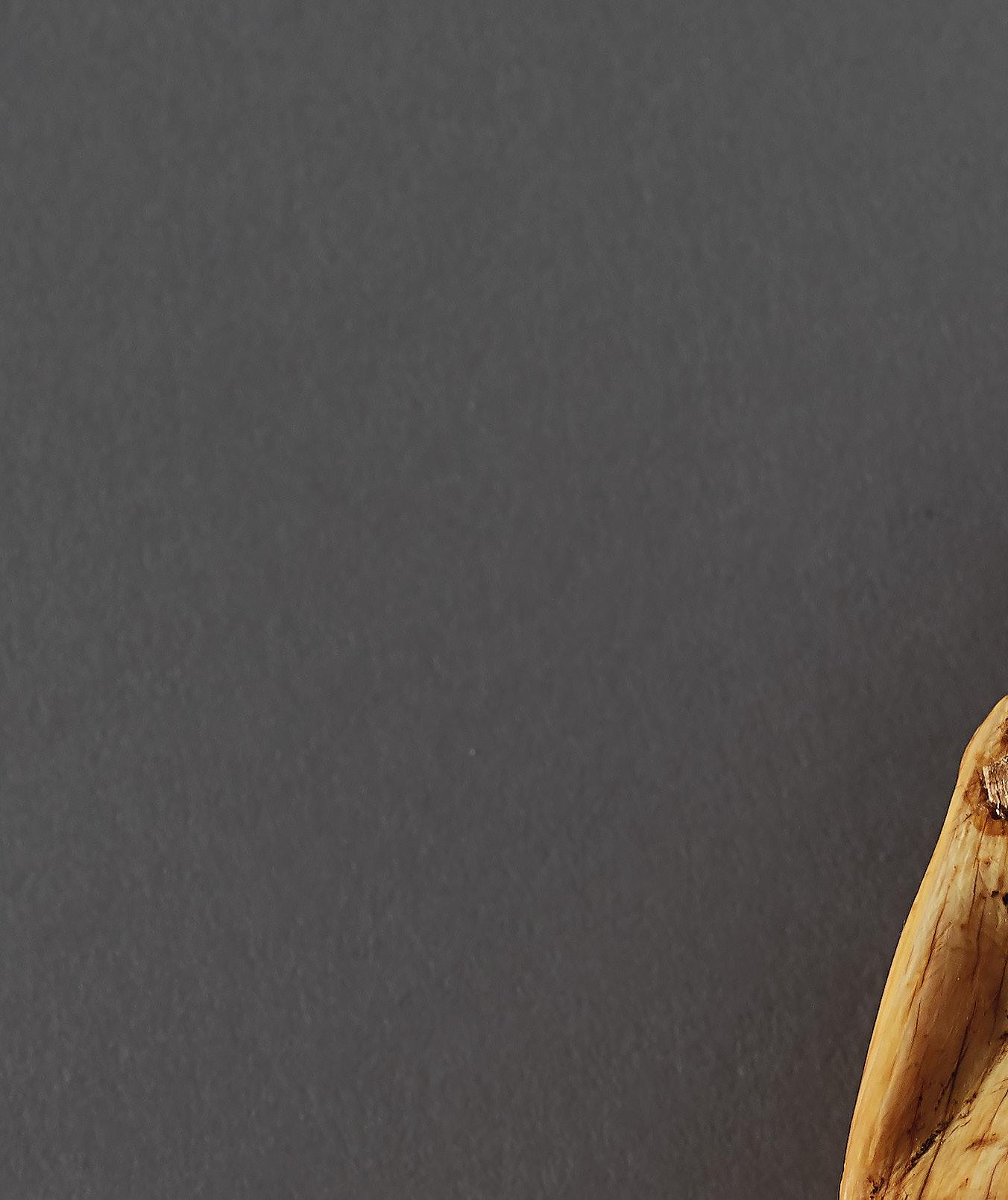
Crucified Christ, c.1270


When one thinks about great Medieval artists, Giotto and Giovanni Pisano’s names immediately come to mind. I visited their masterpieces, the frescoes in the Arena Chapel in Padua and the sculpted pulpits of Pisa and Pistoia, when I was a student. These first encounters are deeply ingrained in my memory.
I never would have thought that I would be fortunate enough to handle a work by one of these masters. Giovanni Pisano marks an extraordinary moment in the history of sculpture and the story behind the sale of this intensely emotional Corpus vouches for the outstanding importance and rarity of his art.
The Musée de Cluny in Paris showed interest in acquiring this work early in 2020. As the National Museum of the Middle Ages, it hardly ever acquires works that do not have a strong connection to French art history. The exceptionality of the Crucifix and Pisano’s debt to French Gothic masters however spurred the curatorial team, which embarked on an ambitious fundraising campaign to coincide with their greatly anticipated and successful reopening of the museum in 2022.
The Crucifix officially joined the collections in January 2023. It is the only work by the Tuscan master in a French public collection.


The Madonna in Adoration of the Christ Child, c.1470–1475


Great works from the early Renaissance are hard to come by. Monumental, glazed terracotta roundels by Andrea della Robbia are impossible finds.
The quality of this work is outstanding. Both wreath and roundel have been sculpted and glazed with the same attention to detail. The angels’ faces, the Madonna’s gaze and the gestures of the Christ Child are not just simply beautiful and sweetly modelled but display a striking psychological depth.
I was asked to deal with this work in the midst of the Covid-19 pandemic. Things were quiet and I was researching and preparing this work for a special presentation. A private client saw it in December 2021 and jumped at the chance of acquiring it before everyone else. I was very pleased to broker an agreement between the new owner and the director at the Museum of Fine Arts, Houston, where the piece is now on long-term display.



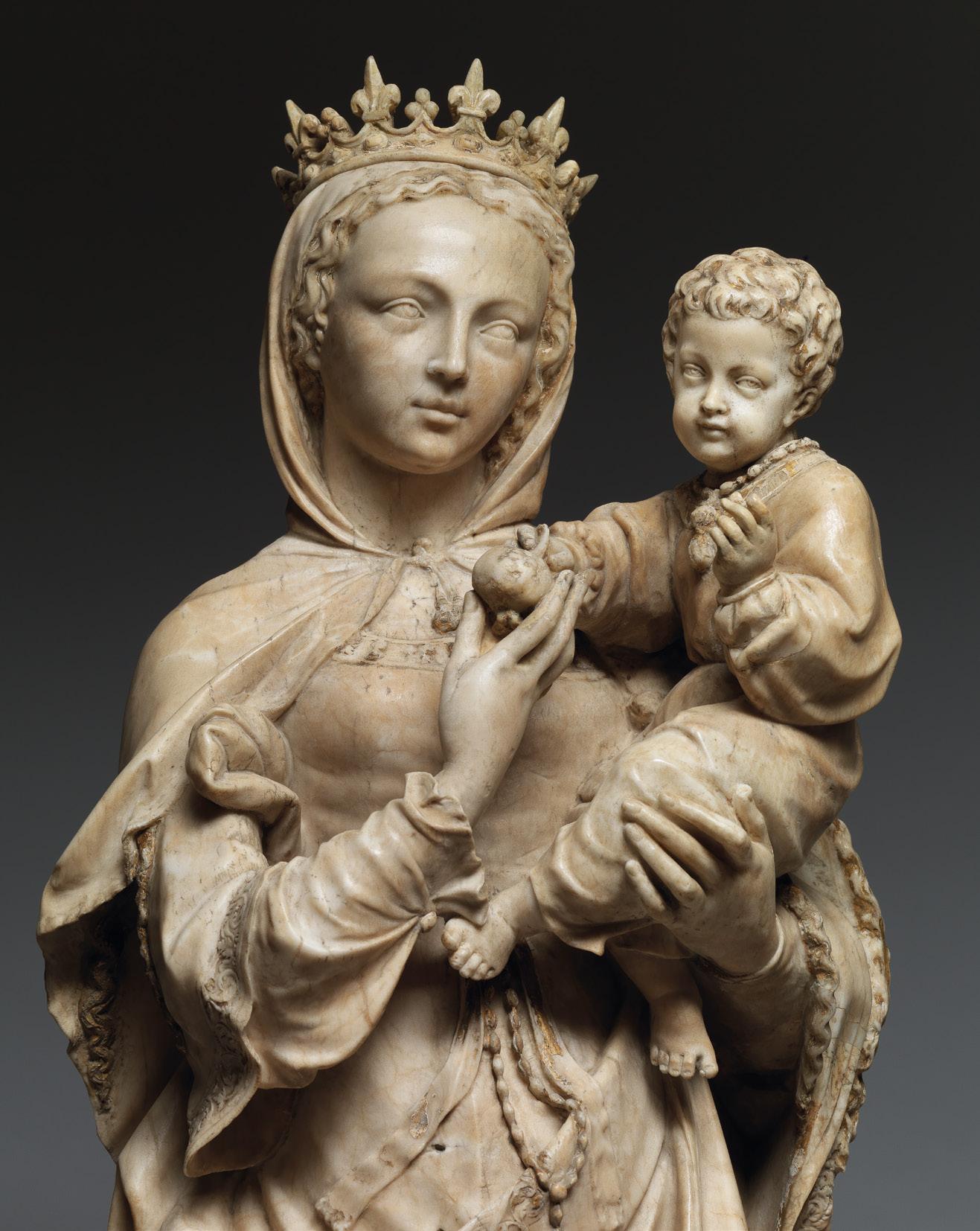
Virgin and Child , c.1530–1535

When I saw this work for the first time, it would not allow me to leave the room. The cleverness of the composition, the quality of the carving, the translucid quality of alabaster, the polychrome surface and the pristine state of conservation of the piece literally forced me to stop in my tracks.
This French Virgin and Child is a sculpture without an artist’s name: their memory has been lost to history. Dealing in Western art, we often desire and obsess with names to give meaning to artworks, but on some occasions, this is not needed, and the importance of the work transcends any biographical fixation.
We built our stand at TEFAF Maastricht 2022 around the piece. The sculpture was bought during the fair by the Kimbell Art Museum.



Lion Devouring a Doe, late 16th century

In 2023, we were asked to handle an important group of sculptures by the heirs of an established collector in the USA. Prieur’s Lion is, without doubt, one of the highlights of that collection.

This exquisitely cast and beautifully patinated bronze is one of the most recognisable compositions ever executed by the artist, court sculptor for Henry IV of France. It is also one of only three known casts of this model. The other two versions are in the famed collections of bronzes of J. Tomilson Hill (formerly in the Thyssen-Bornemisza collection) and Robert H. Smith (now in the National Gallery, Washington).
The Lion was one of the highlights of the Gallery’s stand at TEFAF 2023, where it was sold to an important collector in the first few minutes of the fair.

San Carmelo, 1628–1630

‘This remarkable painting deepens our understanding of Zurbarán’s unparalleled talent, and of the Spanish Baroque more broadly’
Katie Luber, Director and President of the Minneapolis Institute of Art
It was such a privilege to handle this work by Francisco Zurbarán, a shining star in the firmament of Spanish art and one of the most celebrated painters of Baroque Europe, with my long-time colleague and friend, Tim Warner-Johnson.
The canvas was commissioned by the Mercederian Order of Seville for the ‘Sala De Profundis’, a highly important space in the monastery, where deceased monks were prepared for burial. It was conceived as a
pair to the artist’s Saint Serapion, now in the collection of the Wadsworth Atheneum Museum of Art.
The present picture, which was removed from the monastery following Napoleon’s invasion of Spain in the early nineteenth century, was rediscovered only in 2010. I truly hope that its acquisition by the Minneapolis Institute of Art will make the possibility of a reunion (even a temporary one) with its iconic pair possible in the near future.
Minneapolis Institute of Art
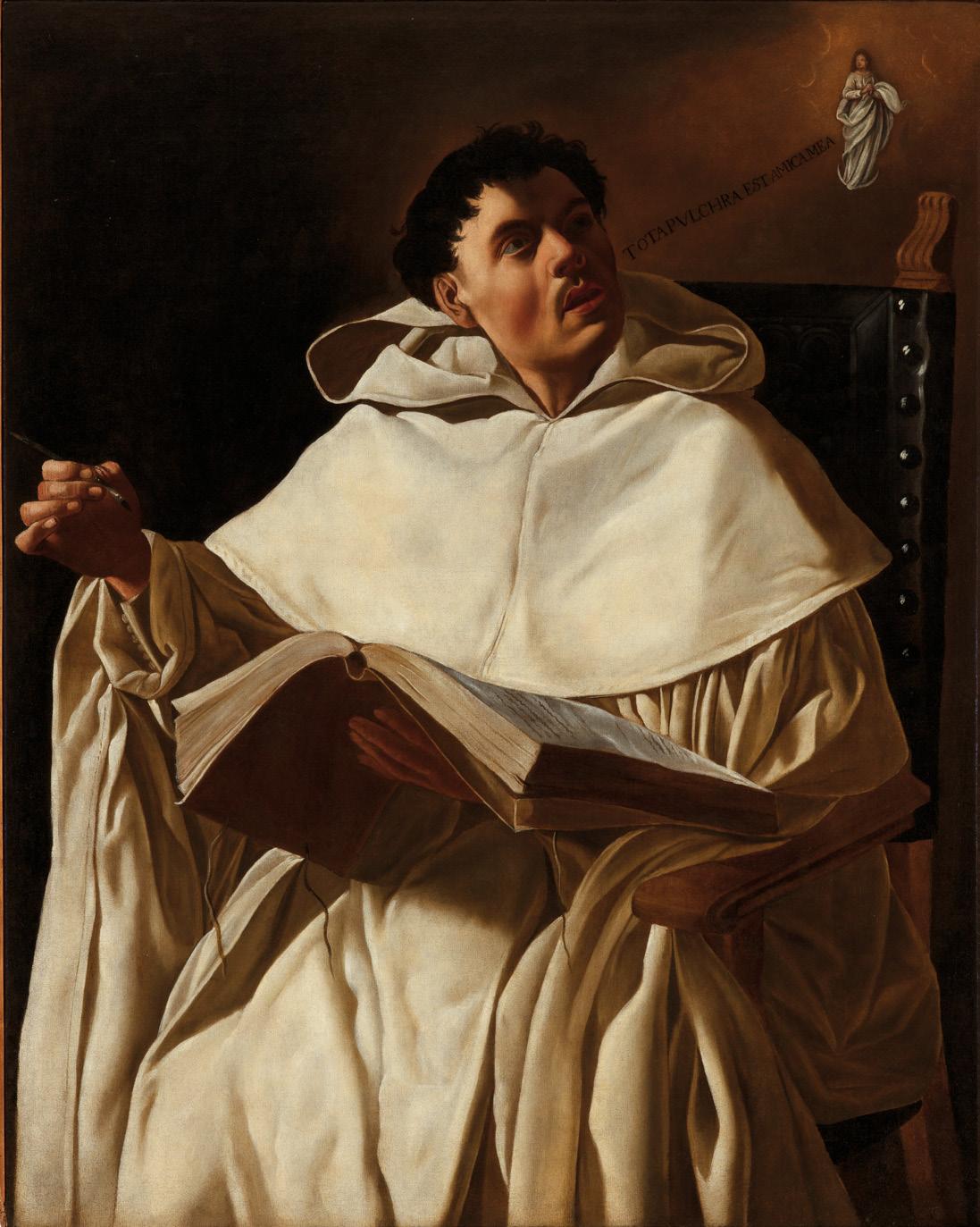

Portrait Bust of Nicolas Poussin, c.1630

This terracotta bust is one of only six known busts executed by Du Quesnoy, the leading French sculptor in Bernini’s Rome. Not only that: the sitter is none other than the great painter Nicolas Poussin. The intimate size adds to the preciousness of this model, which I exhibited during the gallery’s first outing to Master Drawings New York in 2019.


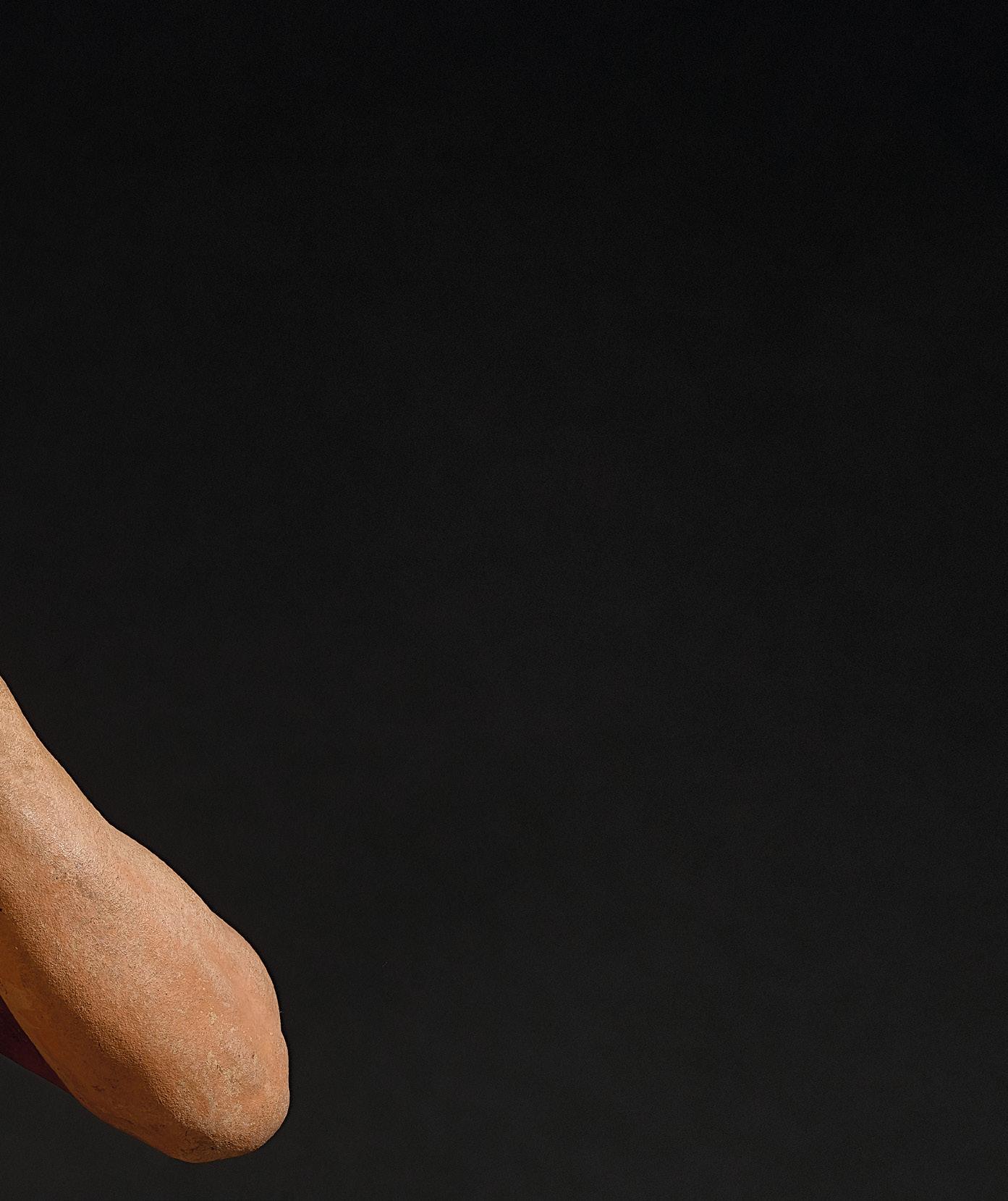
Brooding Pluto, 1652

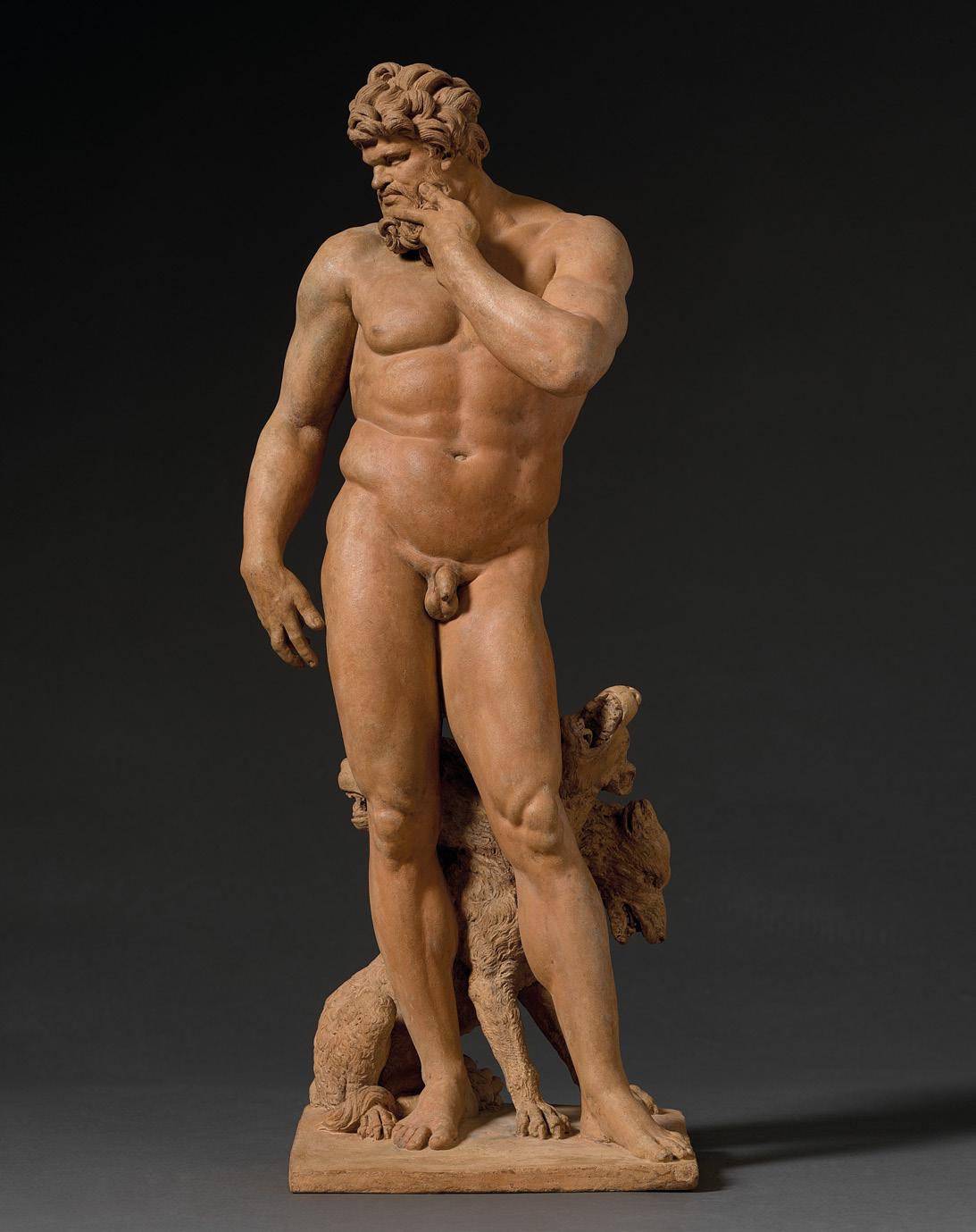

It all began at the Courtauld Institute of Art. I remember the time of my studies there vividly and with great fondness. The lectures, the colleagues, the on-site visits –they have all shaped the last thirty years of my career as a dealer.
One of my first loves as a student was Baroque Rome and particularly the work of Bernini. This wonderful terracotta by Michel Anguier ties in beautifully with that moment in history. The artist moved to Rome in 1641, where

he worked for the great master and met Poussin and Duquesnoy. He conceived the present piece around 1652, once he moved back to France, bringing with him the lessons he had learned in the Papal City.
Pluto was originally part of a series of six works, which represented ancient ‘divinities according to their temperament’. Only the present model survives, together with a Neptune Agitated. Our version is documented in François Girardon’s collection, royal sculptor to Louis XIV.

Portrait Bust of Georges Mareschal, c.1700–1710

Girardon’s Portrait of Georges Mareschal is an incredible tour-de-force in carving. The liveliness of the expression and the texture of the skin and clothes is so elegantly chiselled that it appears as if the bust is modelled in wax, rather than carved in marble.

Mareschal was the surgeon at the court of Louis XIV and, as such, he was extremely close to the Sun King. Girardon was the favourite royal sculptor, and the portrait was likely produced around 1700-1710, when the two men worked together at Versailles.
‘When you acquire an object that you know comes from here, you know you are improving the level of truth’
Laurent Salomé, Director, Châteaux de Versailles et de Trianon

The story behind this bust is the story of the magic of Maastricht. We exhibited the sculpture during our first TEFAF, in March 2020. Until then, the piece was only known through a black and white photograph. When Laurent Salomé, Director of Versailles, walked onto the stand, you could feel the excitement at having rediscovered this masterpiece of the French Baroque.
During the time I handled the work, it almost felt like it was never mine: it always belonged to Versailles. Some objects can only have one home.
Château de Versailles

A Companion of Diana (Compagne de Diane), 1699–1744


Every time I visit the Louvre I must stop by the Cour Marly. It is stronger than me. There is something about the way the light fills the court from the glass ceiling, the symmetry of display, the monumentality of the space that keeps calling me back.

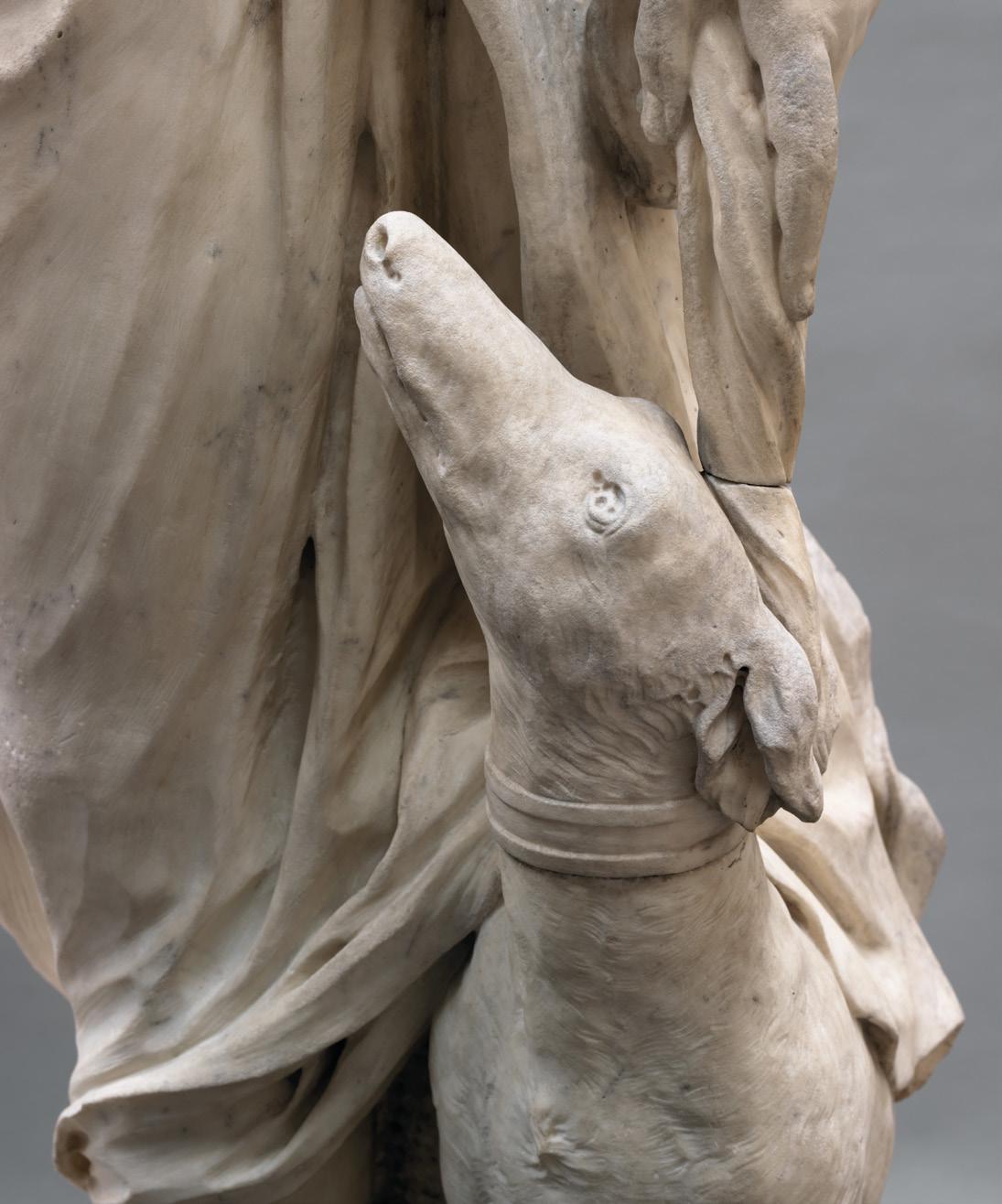

The Cour Marly collects the treasures that once populated the gardens of the Château de Marly – King Louis XIV’s leisure palace. Only Versailles surpassed its scope and importance.
Our Companion of Diana was created for the palace’s gardens by Guillaume Coustou the Elder. It was part of a group of fifteen other marbles that were meant to represent the entourage of the goddess of hunting, which were commissioned by an equal number of royal artists. Four of them are currently preserved in the Louvre.
Death of St Joseph, c.1729
This relief is a rare ‘modello’, a highly finished preparatory study, for a bronze executed around 1729 by the Florentine artist Massimiliano Soldani. The bronze was commissioned by the Spanish Viceroy of Sicily, but Soldani eventually decided against sending the finished work to Palermo since he feared he would, in his own words, preserved in an extraordinary letter, be ‘ripped off’ by the patron.
A work in clay by Soldani is a very unusual thing. It represents a key moment in the development of the composition, which the artist eventually changed before forging the bronze. The piece testifies to the working methods of the sculptor, as well as to Soldani’s status as one of the leading artists at the Medici court in Florence and abroad.
This important ‘modello’ was acquired by the Detroit Institute of Arts on our stand at TEFAF Maastricht 2023.


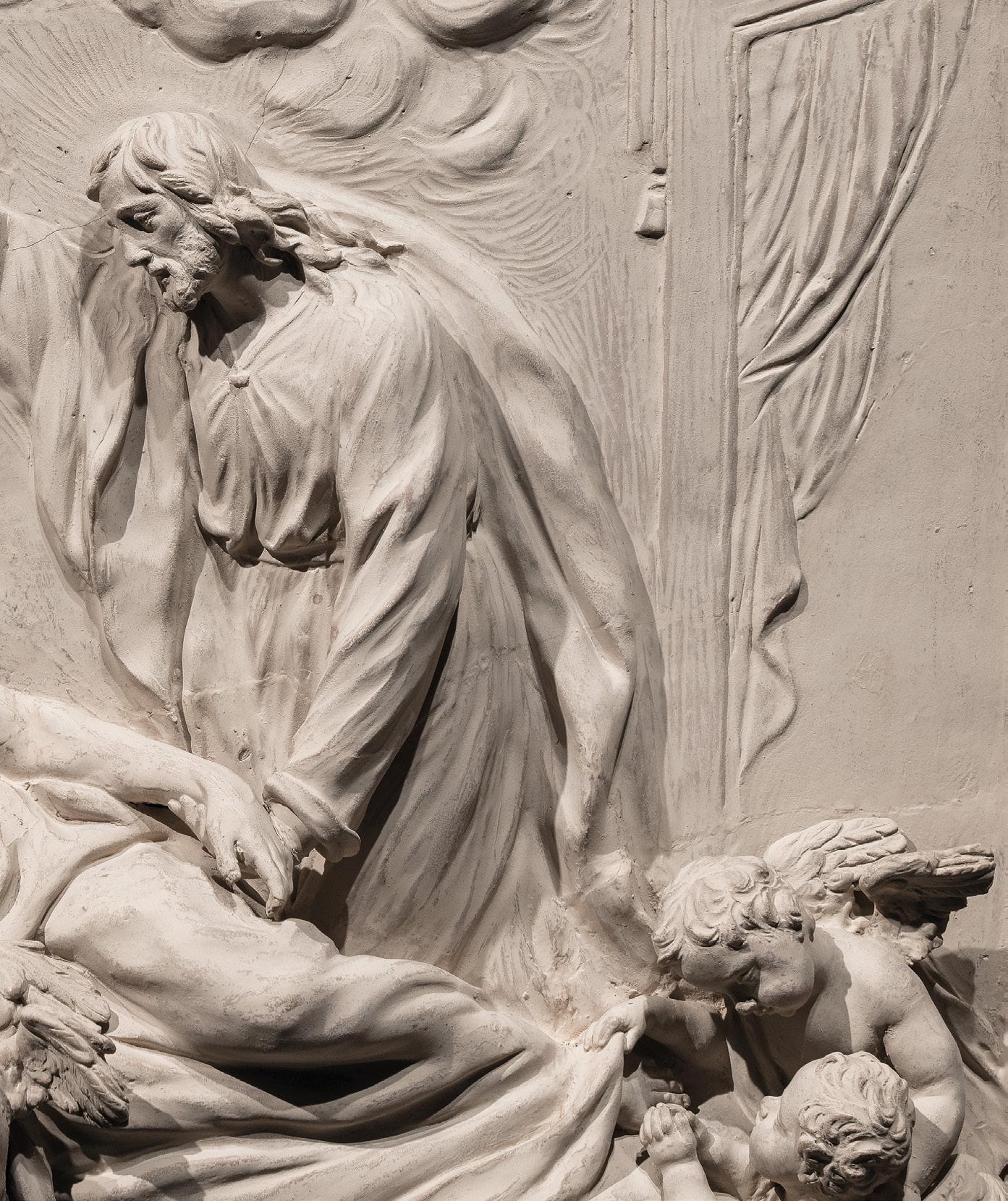



Some images can only be associated with one name. Such an elegant composition, such a skilled use of the stylus, such a unique take on antiquity can only point to one artist: Clodion. He was the most exceptional modeller in terracotta in late eighteenth-century France, who singlehandedly shaped taste and contemporary approaches to the antique.

Young Girl with an Urn is a small-sized masterpiece and for me, simply a jewel and a joy to behold.


Why Born Enslaved!, 1869

‘One of the greatest works of art we’ve acquired. It speaks to so many of the issues we are grappling with today’
William M. Griswold, Director, The Cleveland Museum of Art

One of the great pleasures of working as a dealer is the journey one shares with an artwork.
I discovered this plaster of Carpeaux’s famous composition Why Be Born a Slave as it was coming up for auction in Switzerland. I immediately sensed the sheer quality of the modelling and the richness of the surface from the pictures, but the arresting power of the piece is only truly revealed when you stand in front of it.


Once I acquired the work, technical analyses confirmed that its surface was the original one, made up by distinctive brown-red ochre tones that had been applied in the sculptor’s studio directly over the plaster. Further visual comparisons led to another important discovery: the scratches and marks on the cast matched those of the original model that was sold at the famous sale of Carpeaux’s studio contents in 1913, recorded in a photograph published in the sale catalogue. This and other telling clues indicated that this was the master model for numerous other casts in other museum collections.
I presented Carpeaux’s bust at Master Drawings New York in 2022, where it was acquired by The Cleveland Museum of Art. Two months later, Fictions of Emancipation: Carpeaux Recast opened at The Metropolitan Museum of Art. This thought-provoking and challenging show raised a wealth of important questions about the historical context in which the model was created, as well as its reception, demonstrating the contemporary relevance of Carpeaux’s creation.
Artists by Artists was the first exhibition I curated at 35 Bury Street in 2018. The relief hung in our sky-lit gallery, greeting visitors to the space. This is a great image of Millais, sculpted in the year of his election to the Royal Academy. It was executed at the heart of the Pre-Raphaelite brotherhood, which broke up one year later, in 1854. It is also an exceptionally well-preserved object, which maintains the original slate mount, frame, and a crisp signature. I am particularly proud of the sale of this Munro sculpture to The Birmingham Museum and Art Gallery, which houses one of the most important collections of Pre-Raphaelite art in the UK.



Shield with the Head of Medusa, 1887
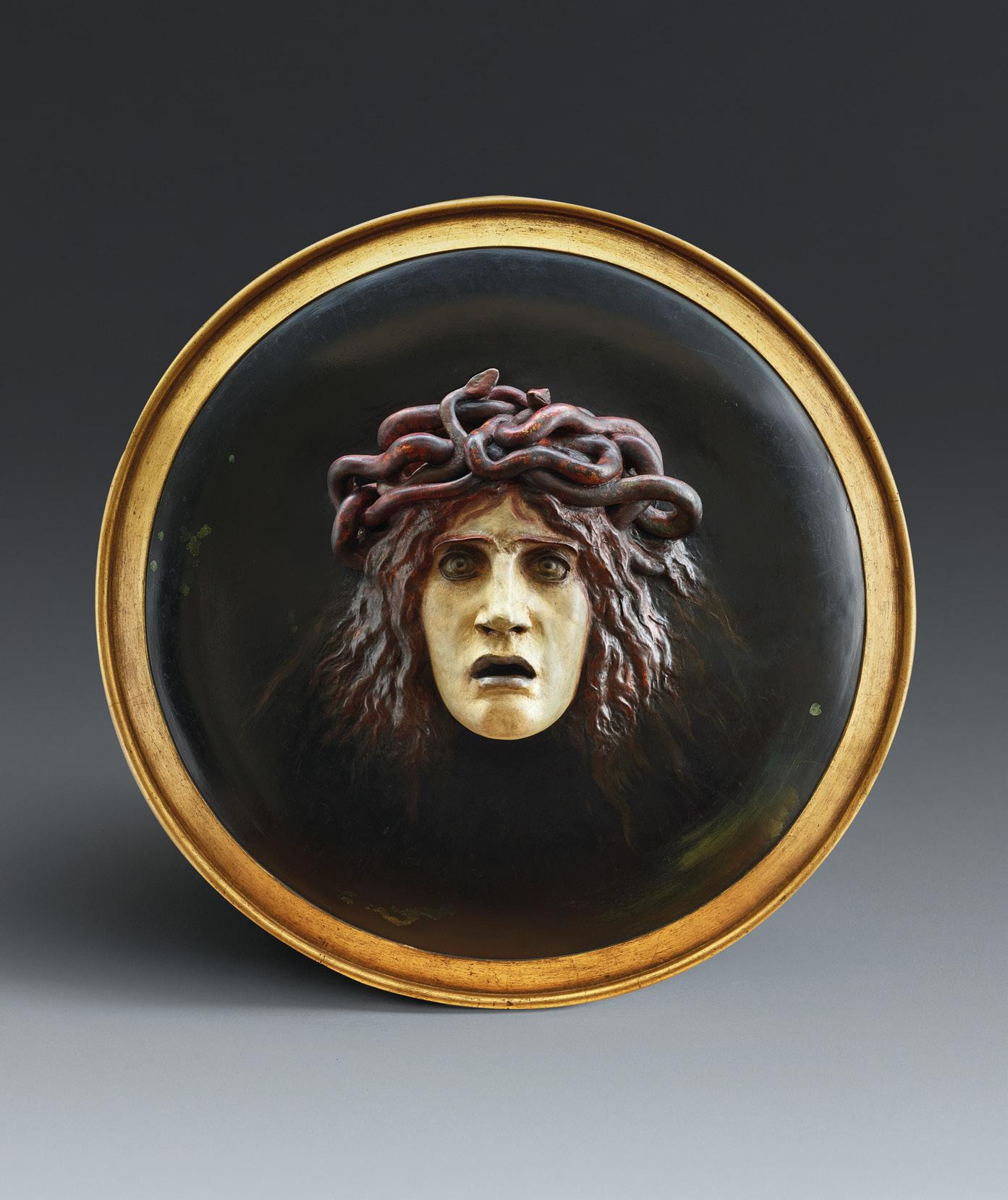

I am interested in objects that tell a story, that evoke a specific moment in time and that bear considerable meaning in the history of art. Böcklin’s Shield with the Head of Medusa does all these things.
The Shield is an icon of Symbolism. It is the most accomplished sculpture ever created by the artist and stands together with the painting of the Isle of the Dead among the foundational works of the movement. It is also a technically complex piece, made from plaster and papier-mâché that were then polychromed.
The Shield crosses the boundaries between the worlds of sculpture and painting, and by doing so it represents a unique moment in art history and historiography, when the debate on the original colour of ancient marbles was raging in European universities.
I am delighted that Böcklin’s work will continue to inspire conversations as part of the collection of the Wadsworth Atheneum Museum of Art in Connecticut.
Portrait of Charles Frederick Worth, 1893
I discovered Friant’s work during a visit at the Musée des Beaux-Arts in Nancy, where I was struck by his realist language. The Portrait of Charles Worth is not the kind of image you would expect from him, indeed, but it is an extraordinarily deep and atmospheric rendition of a likeness. As a full-length depiction of the father of haute couture, it is also a unique document and a statement of his importance in the history of fashion. The painting now hangs in the Musée d’Orsay, which acquired it from the Gallery in February 2022.


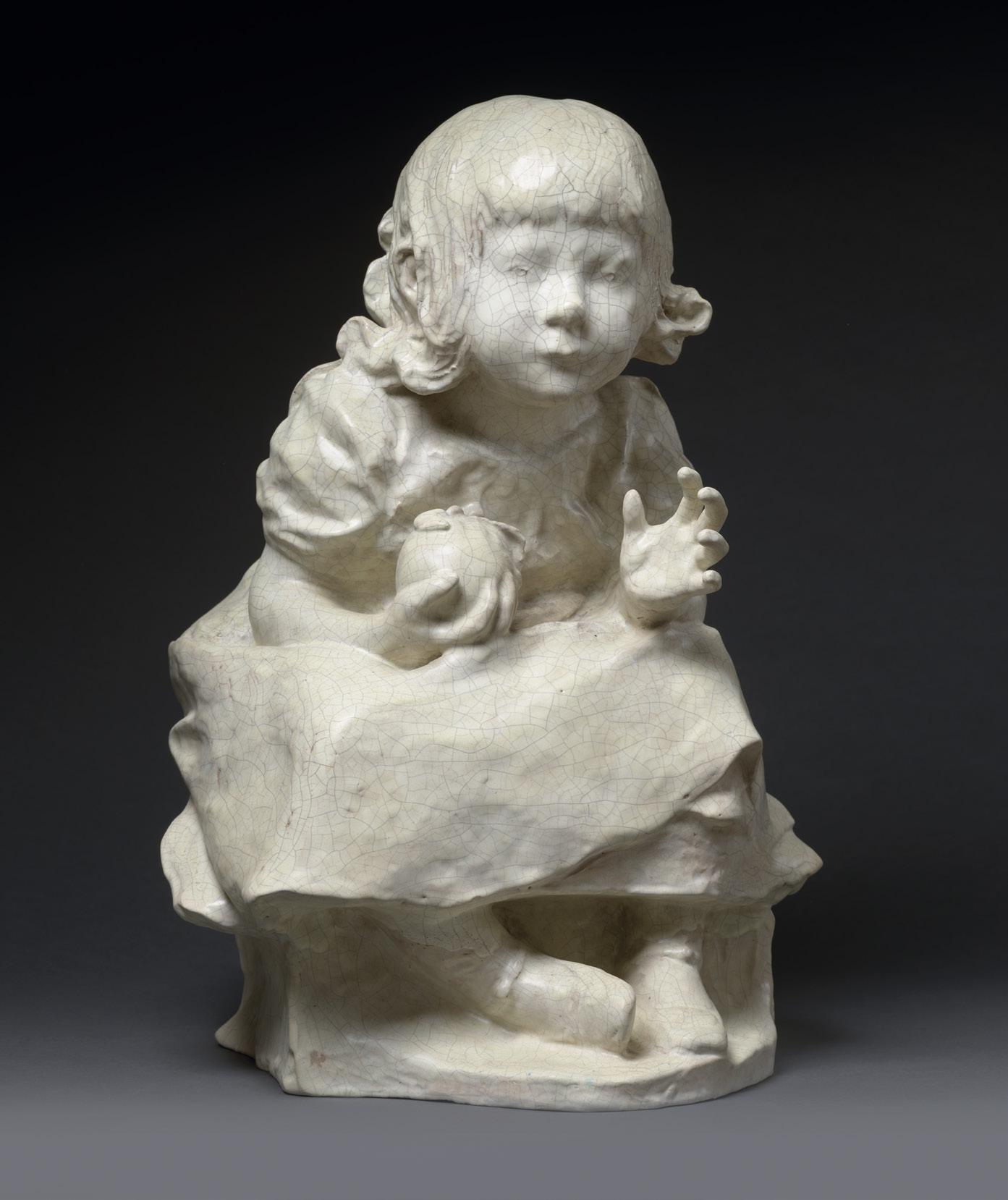
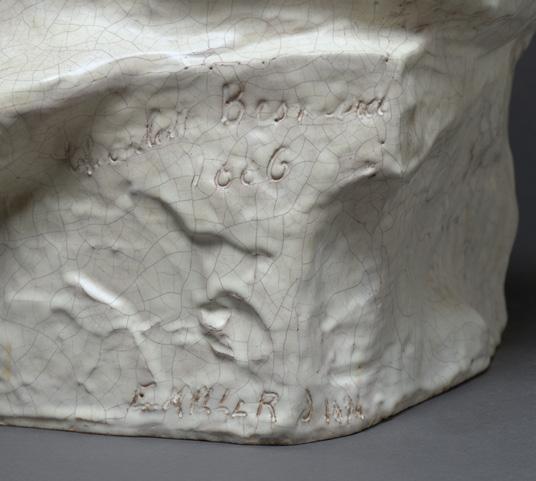
I am very proud of having owned this work by Charlotte Besnard, a fierce nineteenth-century artist who is still awaiting the international recognition she deserves.
Besnard received her artistic education from her father and participated at her first Salon at the age of fifteen. Because no women were allowed to take part in the competition for the Prix de Rome, she actively sought out patrons to sponsor her trip to Italy.
Germaine is a striking representation of Besnard’s daughter, sensitively rendered in all her liveliness. The medium of glazed terracotta gives the sculpture a uniquely whimsical appearance. It was exhibited at the ‘Salon de l’Art Nouveau’ organised in 1895 at the Maison Bing in Paris – a seminal show that foreshadowed the direction European art was to take at the beginning of the twentieth century.
The sculpture formed part of the special display dedicated to great ‘femme artistes’ of the nineteenth century on the gallery’s stand at Maastricht 2023. You can now visit her at the Philadelphia Museum of Art.
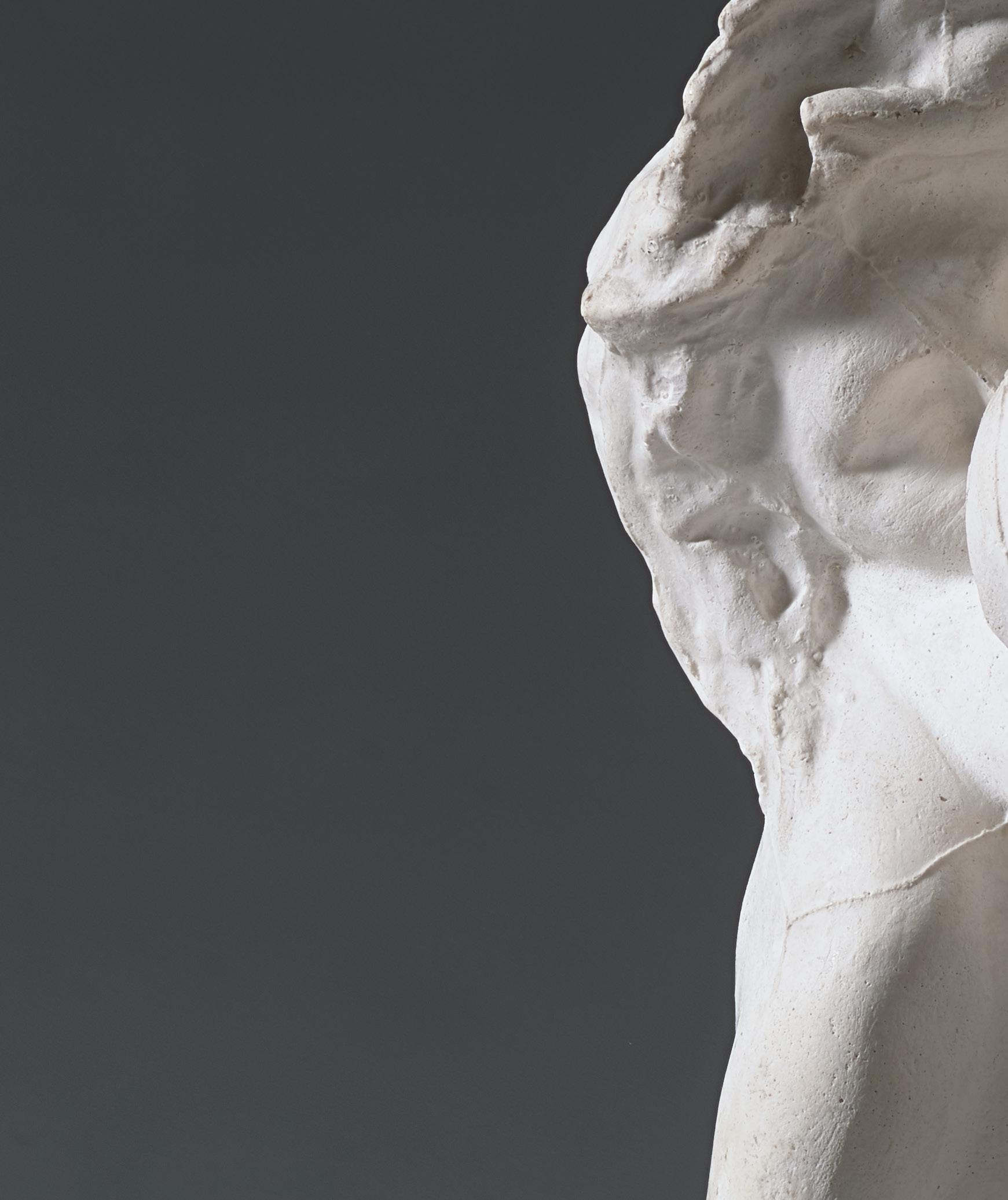
Bacchantes Embracing, 1894

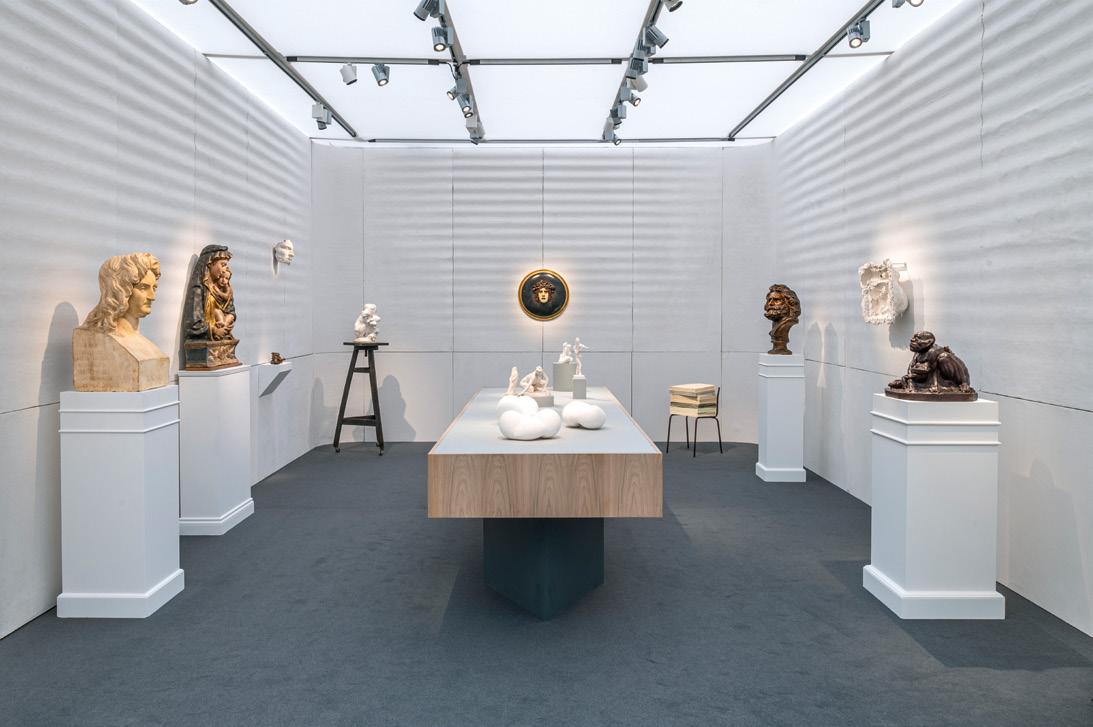
In 2021, Luke Syson, the Director of the Fitzwilliam Museum in Cambridge, asked me to curate a display for the ‘Stand Out’ section of Frieze Masters, London. This was the gallery’s first fair after the pandemic, and I wanted to create something special.
After several months of careful planning the result was Plaster! An exhibition on the infinite possibilities of a misunderstood medium. Plaster has always been a fascination of mine and I selected seventeen works that would showcase its use across six centuries, from Lorenzo Ghiberti to Rachel Whiteread.
One could not have a show on plaster without Rodin. The artist’s relationship with the medium is extraordinarily important: his ability to change compositions and rework ideas is deeply tied to the malleability of plaster.
All of this is beautifully conveyed in this intimate group, representing two Bacchantes Embracing, which is signed, dated and dedicated on the base to Rodin’s friend, Gaston Stiegler, who supported the artist during the scandal over his monument to Balzac.



Bull and Pelican, c. 1896

If you have ever visited us at the gallery in the past, during Masters Drawings in New York or on our stand at TEFAF, chances are you will have noticed a glazed ceramic sculpture on display. It is not accidental that five of the 20 works that feature in this catalogue were created in this medium. Glazed terracotta is a great passion of mine and a consistent presence in the gallery.

When did it all begin? When one is truly passionate, or is so invested in a particular strand of art history, this is a difficult question to answer. But if I were to tie this question to the history of the gallery, Frémiet’s Bull and Pelican would be where it would begin.

These Animaux Fantastiques were the result of an alliance between a great modeller and Émile Muller’s skills in handling enamelled stoneware; they were the first glazed ceramic works I handled in Bury Street. In their new home, the Art Institute of Chicago, they are affectionately known as ‘The Critters’ by our friend, Emerson Bowyer, Curator of European Painting and Sculpture at the Institute.
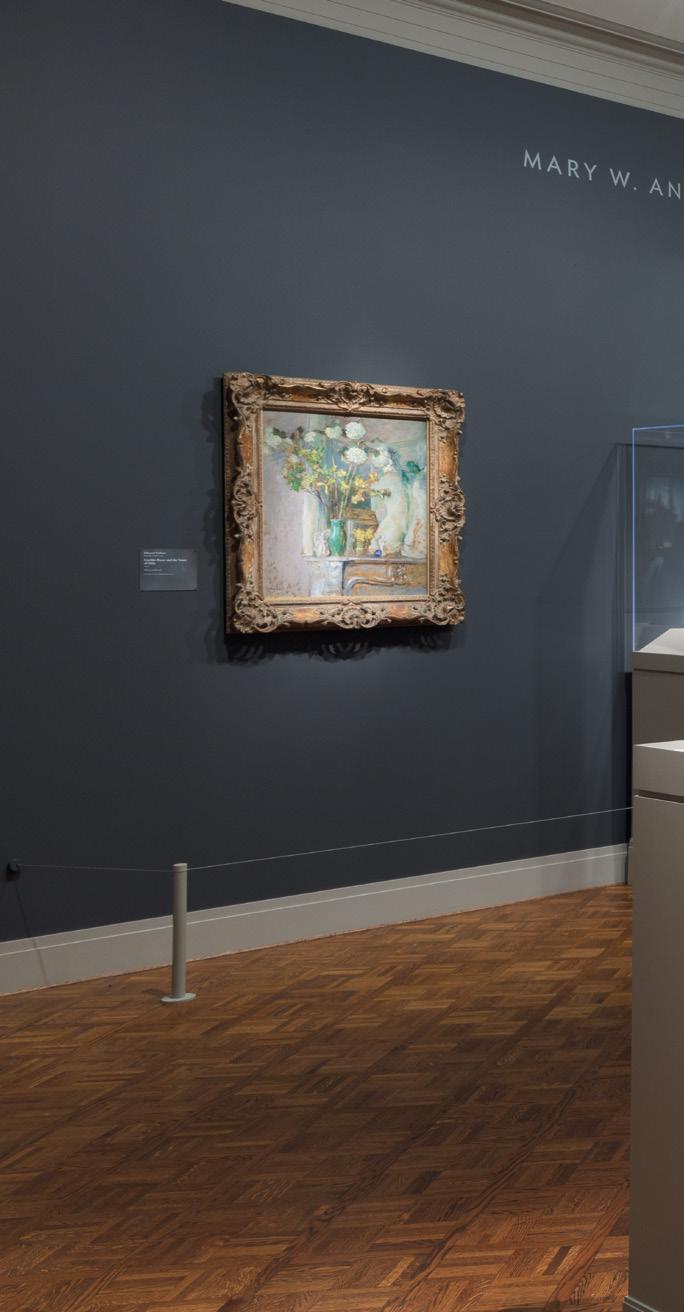



The Vase of the Titans, 1899
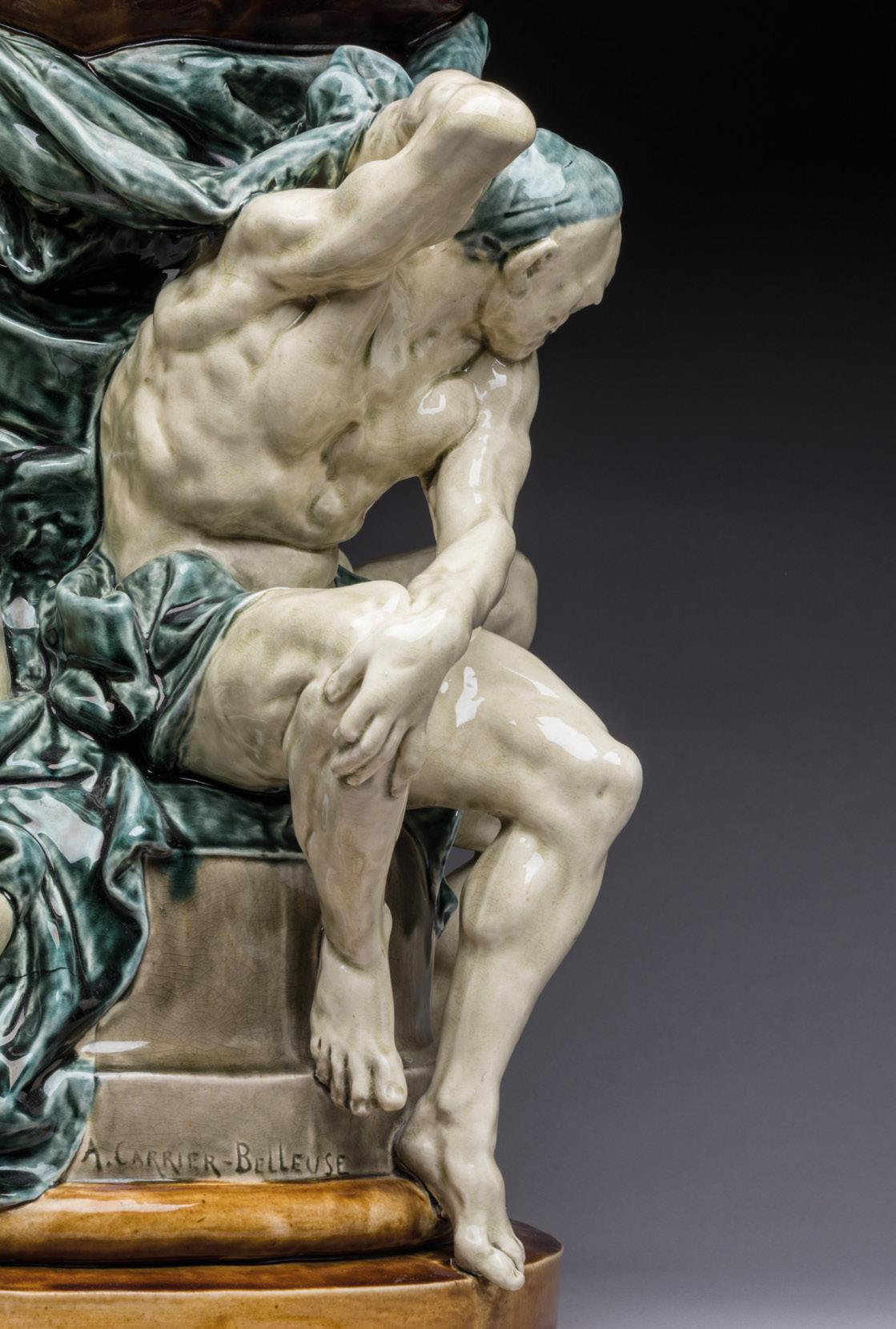
The Vase of the Titans is a work born out of encounters. It represents the meeting between Rodin and Carrier-Belleuse, when the former artist was training and working in the latter’s workshop. It embodies the amalgamation of the styles of the two artists. It stands at the crossing between fine and decorative art.
Finally, its wonderfully glazed surface is a testament to the intermediality of late nineteenth-century sculpture. I could not want anything more of a work of art, and I am glad that this wonderful piece can now be enjoyed by all visitors of the Museum of Fine Arts in Houston.



p. 2
pp. 4-5
p. 6
pp. 10-11
Stuart Lochhead at the Plaster! exhibition on the gallery’s stand at Frieze Masters 2021, London. © Andreas von Einsiedel
François Girardon, Bust of Georges Mareschal, c. 1700–1710, Installation shot at the Château de Versailles. © Château de Versailles, Dist. RMN © Christophe Fouin
Artists by Artists, Installation shot of the exhibition at Stuart Lochhead Sculpture, 35 Bury Street St James’s, June–July 2019
View of Stuart Lochhead Sculpture, 35 Bury Street St James’s, shortly after opening in 2018
p. 25 French, Troyes, Virgin and Child, 1530-1535, Installation shot at the Kimbell Art Museum. Photograph by Robert LaPrelle, Kimbell Art Museum
pp. 26-29
Barthélemy Prieur, Lion Devouring a Doe, late 16th century, Installation shots on Stuart Lochhead Sculpture’s stand, TEFAF Maastricht 2023. Photographs by Jaron James
p. 47
François Girardon, Bust of Georges Mareschal, c. 1700–1710, Installation shot at the Château de Versailles. © Château de Versailles, Dist. RMN © Christophe Fouin.
p. 53 © Musée du domaine royal de Marly – Harry Bréjat
pp. 54-57 Massimiliano Soldani Benzi, The Death of Saint Joseph, c. 1729, Installation shots on Stuart Lochhead Sculpture’s stand, TEFAF Maastricht 2023. Photographs by Jaron James
p. 65
Jean-Baptiste Carpeaux, Why Born Enslaved!, 1869, Installation shot at The Cleveland Museum of Art. © The Cleveland Museum of Art
p. 82 Plaster!, exhibition on the gallery’s stand at Frieze Masters 2021, London. © Andreas von Einsiedel
pp. 88-89 Emmanuel Frémiet, Bull and Pelican, c. 1896, Installation shot at The Art Institute of Chicago. © The Art Institute of Chicago
pp. 94-95 Stuart Lochhead Sculpture, Stand 112, Maastricht 2022. Photograph by Jaron James
We are grateful to Tony Fisher and Prudence Cuming Associates for the photographs they have taken of the gallery’s works.
Photographs have been credited where possible.
Copyright © 2024 Stuart Lochhead
All rights reserved. No part of this publication may be transmitted in any form or by any means, electronic or mechanical, including photocopy, recording or any storage or retrieval system, without the prior permission in writing from the copyright holder and publisher.
Stuart Lochhead has asserted his right under the Copyright, Designs and Patents Act, 1988, to be identified as the author of this work.
ISBN 978-1-8384716-2-0
A catalogue record for this book is available from the British Library.
Design by The Burlington Magazine Publications Limited, London.
Printed and bound in the UK by Gomer Press (printing) Llandysul Enterprise Park, Llandysul, Ceredigion SA44 4JL